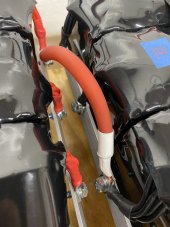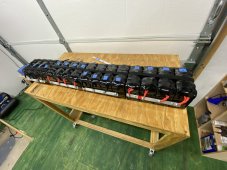LVLAaron
New Member
- Joined
- Jul 16, 2021
- Messages
- 219
I have 16x 100AH packs.
Connected in 4P4S config - So I'll need to connect the P strings. I was planning on using 4GA welding wire. For this short run (less than a foot) will I have any issues? The math checks out but I am curious if the hive mind that is much smarter than me has any advice to avoid unforeseen problems.
Connected in 4P4S config - So I'll need to connect the P strings. I was planning on using 4GA welding wire. For this short run (less than a foot) will I have any issues? The math checks out but I am curious if the hive mind that is much smarter than me has any advice to avoid unforeseen problems.





